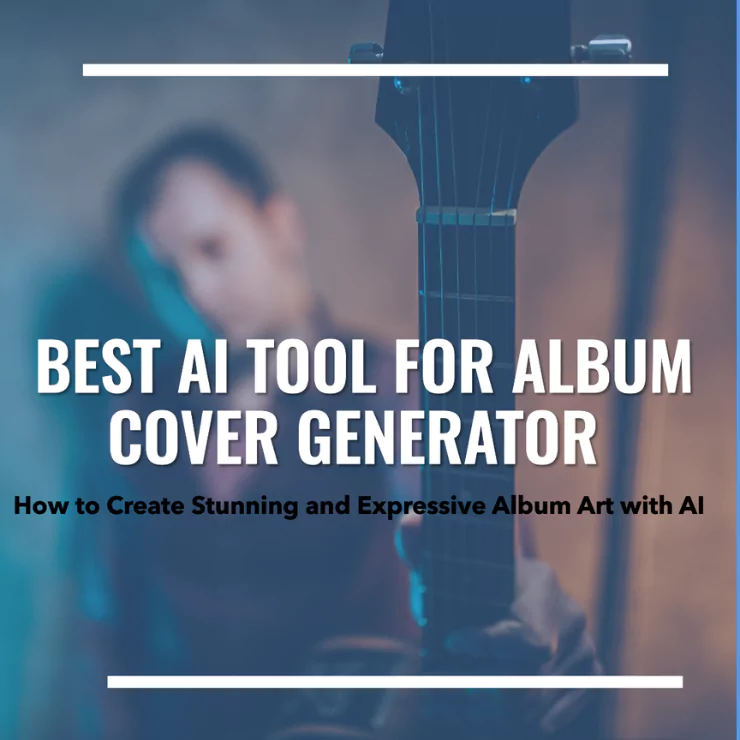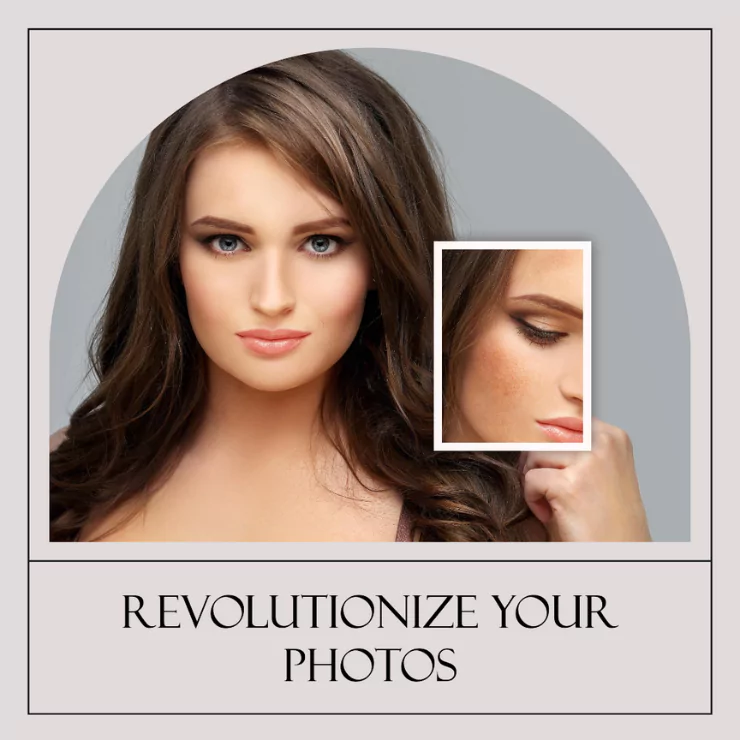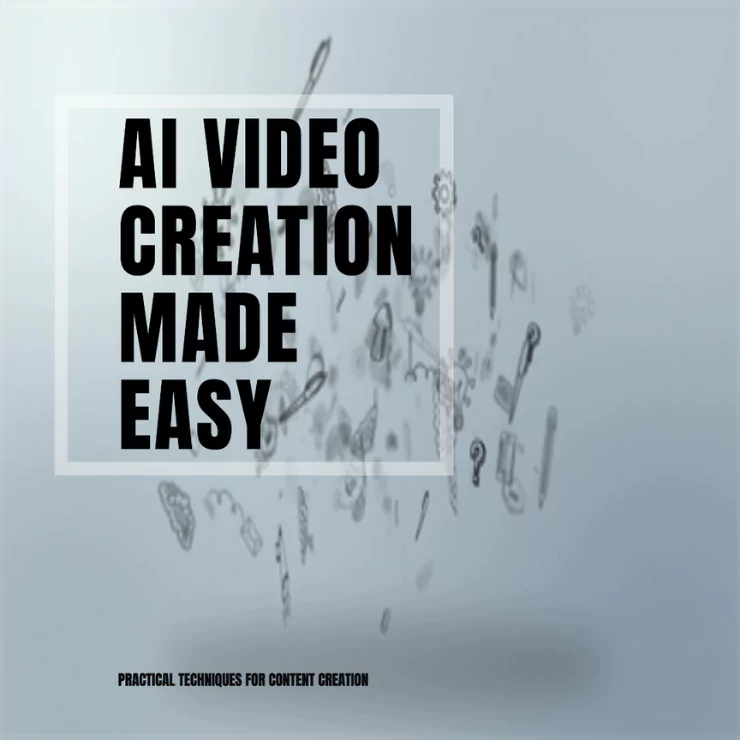Character art is a form of visual expression that involves creating and designing characters for various purposes, such as games, comics, animation, and more. Character art can convey personality, emotion, story, and style through the use of shapes, colors, textures, and details. However, creating character art can be a challenging and time-consuming process that requires a lot of skill, creativity, and imagination.
What if there was a way to generate character art using artificial intelligence? How would that change the way we create and consume digital design? In this article, we will explore the technology, the impact, and the future of AI generated character art.
The Technology Behind AI Generated Character Art
AI has become a powerful and popular tool for character art, as it can assist and augment the artists and designers in creating and animating characters, with improved quality, efficiency, and diversity. In this part, we will explain the technology behind AI generated character art, focusing on the role of neural networks and data sets in character creation. Neural networks are a type of AI model that is inspired by the structure and function of the human brain. Neural networks consist of layers of interconnected nodes, called neurons, that process and transmit information. Neural networks can learn from data and perform various tasks, such as classification, regression, clustering, and generation.
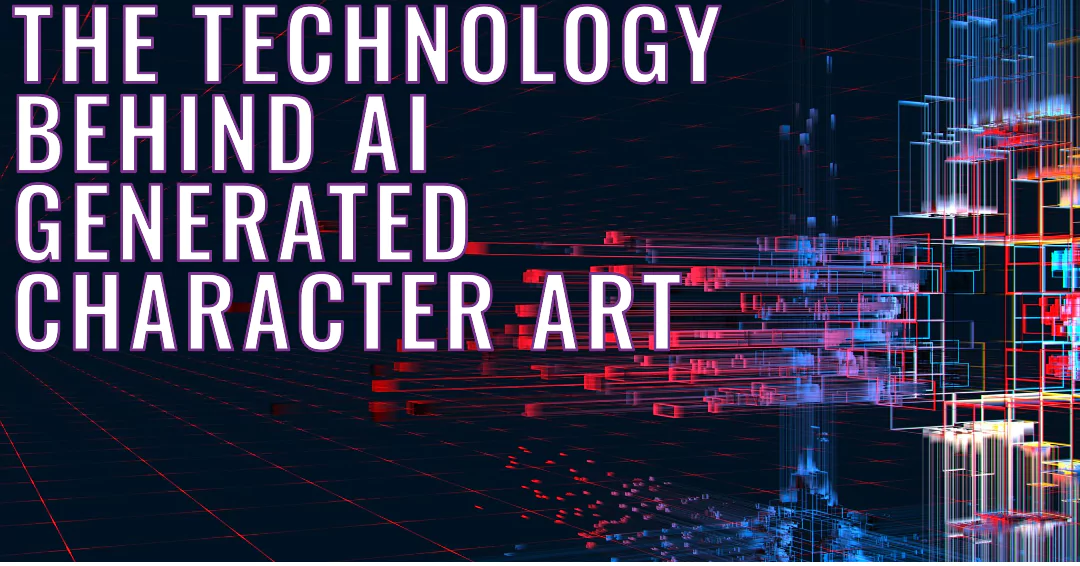


Data sets are collections of data that are used to train, test, and evaluate neural networks. Data sets can be composed of different types of data, such as images, text, audio, and video. Data sets can be obtained from various sources, such as online databases, web scraping, user-generated content, and synthetic data.
The role of neural networks and data sets in character creation is to enable the AI to learn from existing character art and generate new and original art, based on the input and output of the neural network. Different types of neural networks and data sets can be used for character creation, depending on the task and the goal of the AI. Some of the most common and popular ones are:
Generative Adversarial Networks (GANs)
Generative Adversarial Networks (GANs) are a type of neural network that can generate realistic and diverse images, such as character designs, from random noise or latent vectors. GANs consist of two competing neural networks, called the generator and the discriminator. The generator tries to create fake images that look like the real ones, while the discriminator tries to distinguish between the real and the fake images.
Variational Autoencoders (VAEs)
Variational Autoencoders (VAEs) are a type of neural network that can encode and decode images, such as character designs, into and from latent vectors. VAEs consist of two neural networks, called the encoder and the decoder. The encoder compresses the input image into a low-dimensional latent vector, while the decoder reconstructs the output image from the latent vector.
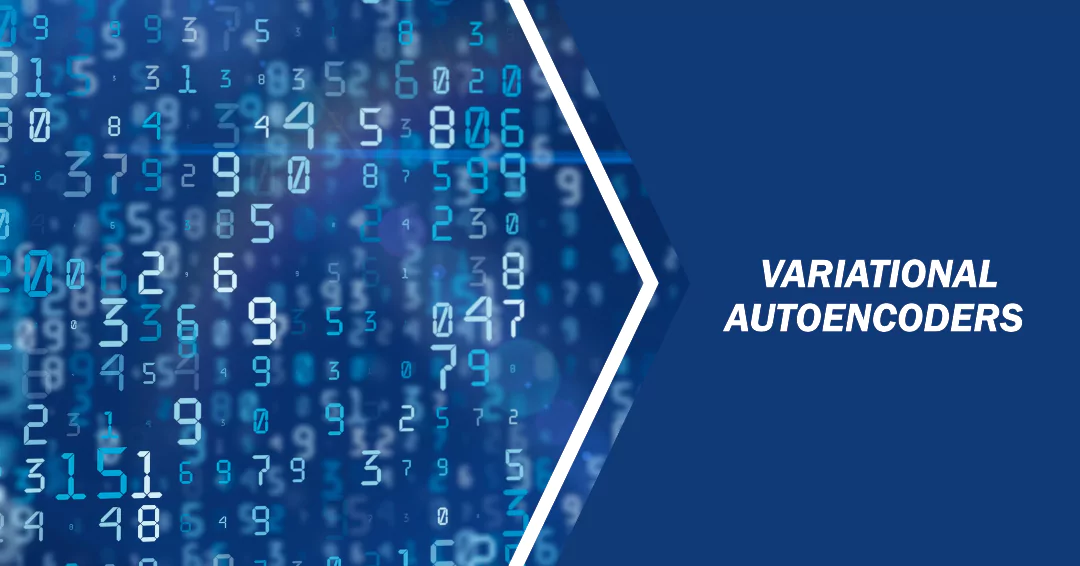


Style Transfer
Style Transfer is a technique that can apply the style of one image, such as a painting, to another image, such as a character design, while preserving the content of the original image. Style transfer can be achieved by using a neural network that consists of three components, called the content image, the style image, and the generated image.
The Impact of AI on Character Design
The advent of Artificial Intelligence (AI) has revolutionized the field of character design, offering unprecedented tools and possibilities for creators. AI algorithms can now assist artists in generating intricate character features, suggesting color palettes, and even animating characters with realistic movements.
One of the most significant impacts of AI on character design is the ability to create highly detailed and varied characters quickly. This is particularly beneficial in industries like gaming and animation, where a large number of unique characters are often needed. AI can analyze existing character designs and produce new ones that maintain consistency with the established style, all while introducing novel elements.
Moreover, AI-driven tools can simulate how characters would look under different lighting conditions, in various environments, and from multiple angles. This helps designers understand how their creations will appear in the final product, ensuring that the characters are versatile and adaptable.
Another area where AI-generated character Art is making a mark is in the personalization of characters. With AI, it’s possible to tailor characters to individual user preferences, making experiences more immersive and engaging. For instance, in video games, players could have characters that adapt over time, reflecting their gameplay style and choices.
However, the impact of AI is not just limited to the technical aspects of design. It also extends to the creative process itself. AI can serve as a collaborative partner, offering suggestions and ideas that might not have been considered otherwise. It can inspire designers to push the boundaries of their creativity and explore new concepts.
How can we generate character art?
If you want to create your own unique and realistic character art, you might be interested in trying out a tool called ZMO.AI character generator. This tool uses an advanced character making model that can generate a character based on your descriptions. You can customize the appearance, personality, and background of your character with just a few words. Here are the steps to use this tool:
First, you need to log in to ImgCreator.AI, a website that offers various AI-powered image creation tools, including the ZMO.AI character generator.



Next, you need to choose the AI character type in the filter selection. You can choose from different genres, such as Medium shot, Natural lighting, cold lighting, European Mix, etc.



Then, you need to input the character description in the text box. You can write anything you want, such as the name, hair color, eye color, clothing, accessories, mood, etc. to describe the character’s personality and traits.
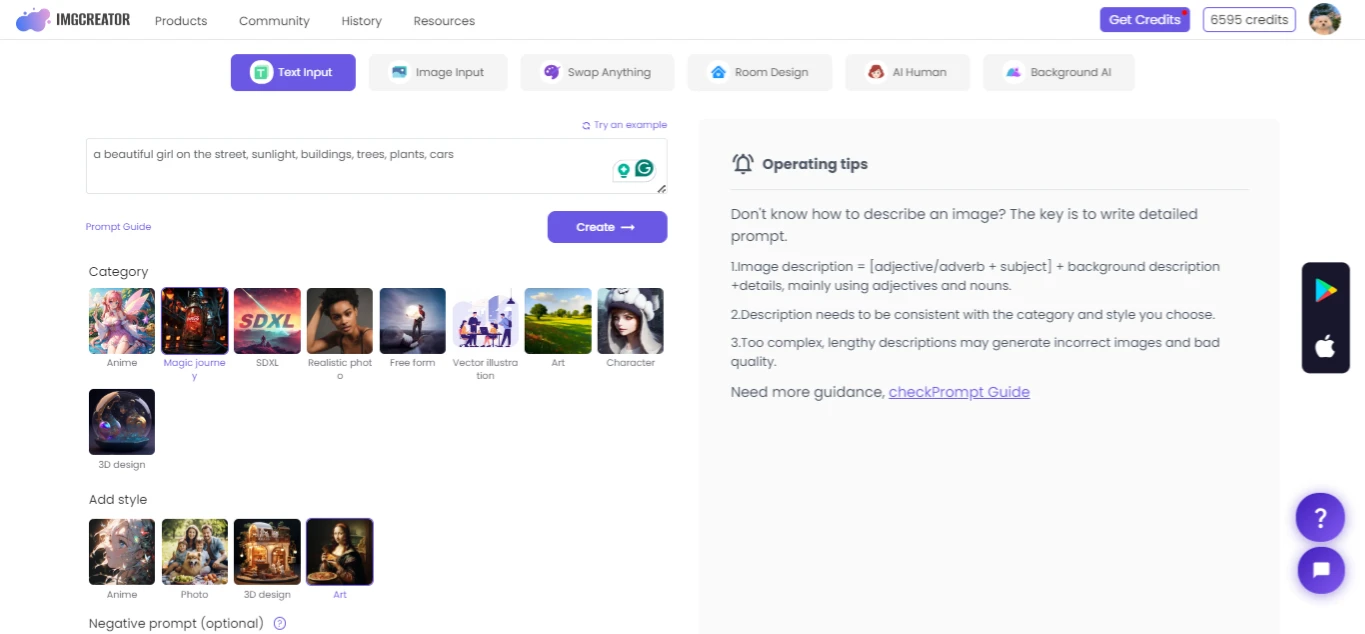


Select the number of images and output resolution. Also, give a negative description like No glasses, No background, etc



After that, you need to click on the generate button and wait for a few seconds. The tool will create a character image based on your description.
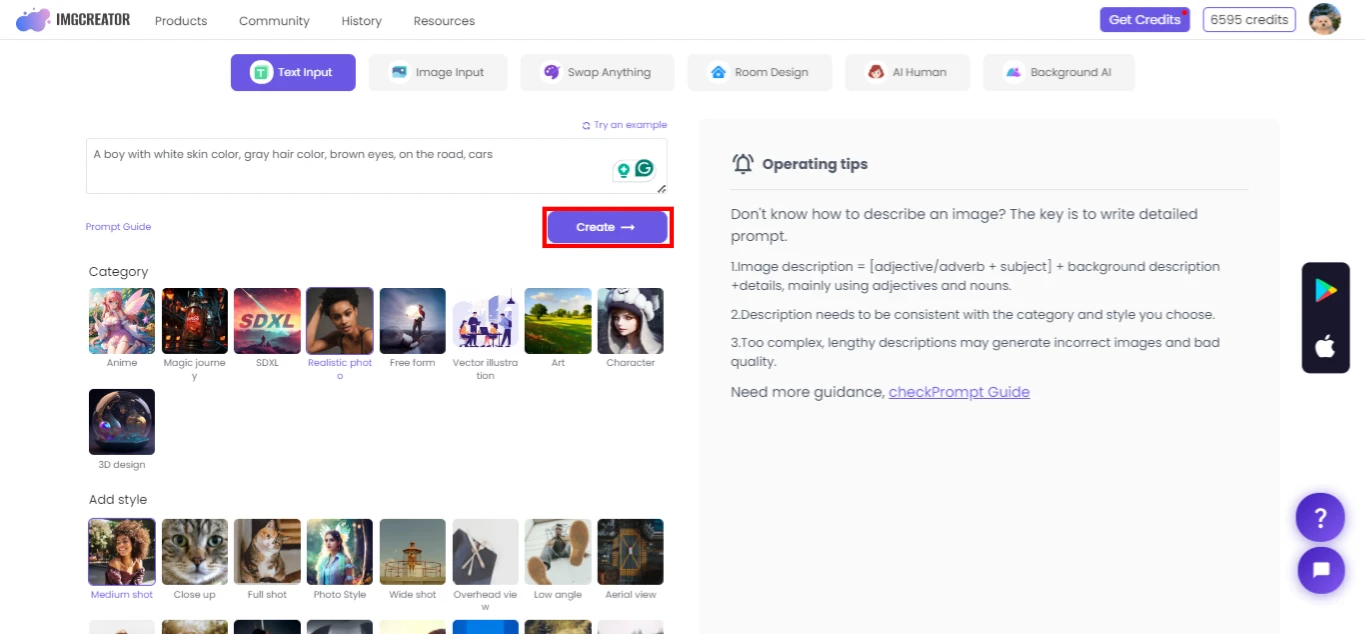


You can see the result on the right side of the screen. Finally, you can iterate and download the final results. You can modify your description and generate a new character image until you are satisfied with the outcome. You can also compare different versions of your character and choose the best one. Once you are done, you can download the character image in high resolution and use it for your projects.
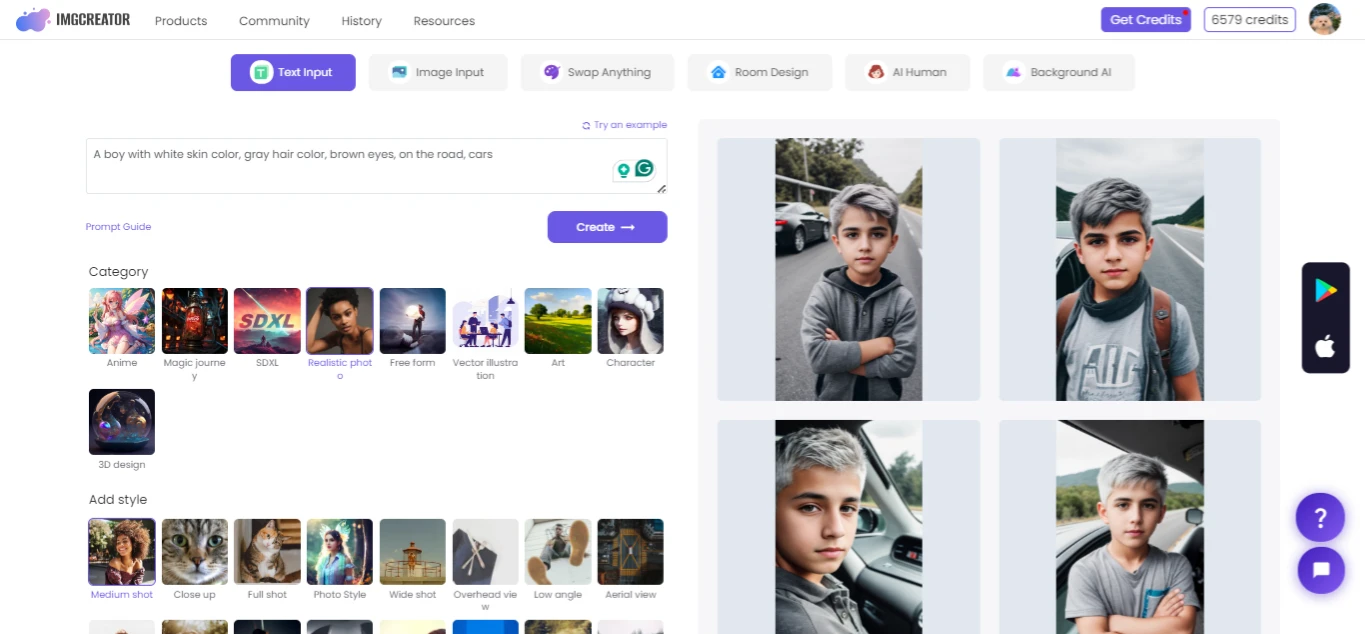


The Future of Digital Design with AI
AI is transforming the world of digital design in many ways. AI can help designers create stunning visuals, animations, and interactive experiences with less time and effort. AI can also inspire designers to explore new possibilities and styles that they might not have imagined before. AI Generated Character Art can also enable designers to collaborate and communicate with their clients and audiences more effectively and efficiently.
Some of the examples of how AI is changing digital design are:
AI-powered image creation tools:
Tools like ZMO.AI character generator, ImgCreator.AI, and others allow designers to generate realistic and diverse images based on their descriptions, preferences, and feedback. These tools can help designers create characters, landscapes, logos, icons, and more with just a few words or clicks.
AI-powered animation tools:
Tools like Adobe Character Animator, ZMO.AI, Loom.ai, and others allow designers to create lifelike and expressive animations with minimal input. These tools can help designers animate characters, objects, and scenes with voice, webcam, or keyboard. These tools can also help designers create realistic facial expressions, lip sync, and body movements for their characters.
AI-powered interactive tools:
Tools like Unity, Unreal Engine, and others allow designers to create immersive and engaging interactive experiences with AI. These tools can help designers create games, simulations, VR, AR, and more with AI-powered features, such as physics, lighting, sound, dialogue, and behavior. These tools can also help designers test and optimize their interactive experiences with AI-powered analytics and feedback.
AI-powered collaboration and communication tools:
Tools like Figma, Miro, and others allow designers to collaborate and communicate with their clients and audiences with AI. These tools can help designers share and edit their designs in real time, get instant feedback and suggestions, and generate prototypes and presentations with AI Generated Character Art. These tools can also help designers translate and adapt their designs to different languages and cultures with AI.
The future of digital design with AI is bright and exciting. AI can help designers unleash their creativity, productivity, and innovation. AI can also help designers create more diverse, inclusive, and accessible digital designs for everyone. AI is not a threat or a replacement for designers, AI Generated Character Art, but a partner and a tool that can enhance their skills and abilities.
Conclusion
In the end, AI is changing how we make characters for games, cartoons, and more. With tools like ZMO.AI, creating characters is easier and faster. AI learns from lots of pictures and can make new ones based on what it learned. AI doesn’t just help technically. AI also helps us to create AI Generated Character Art. It also gives new ideas and makes it easy to work together. With ZMO.AI, you can make characters that fit what you want, making digital worlds more exciting.



